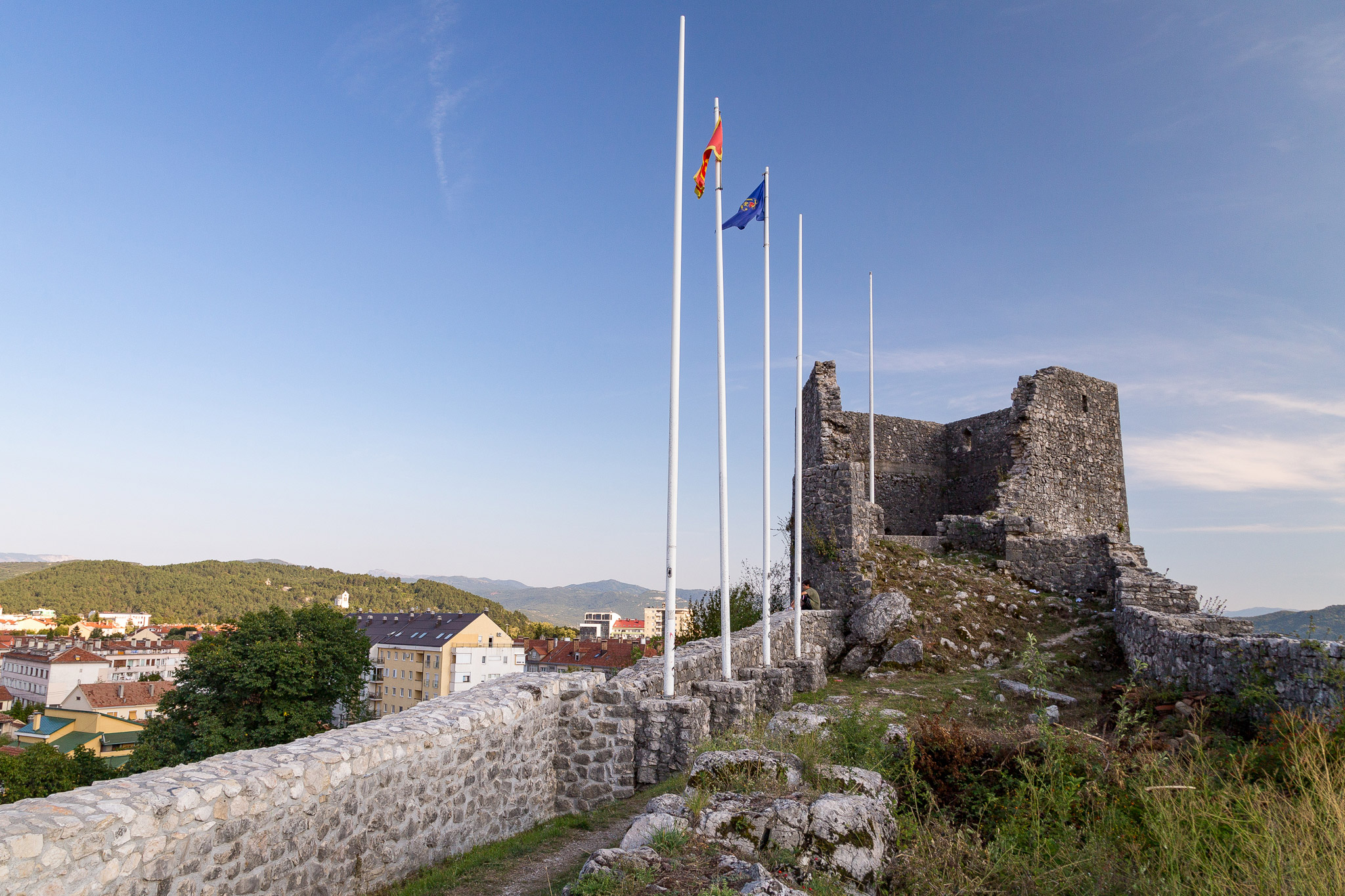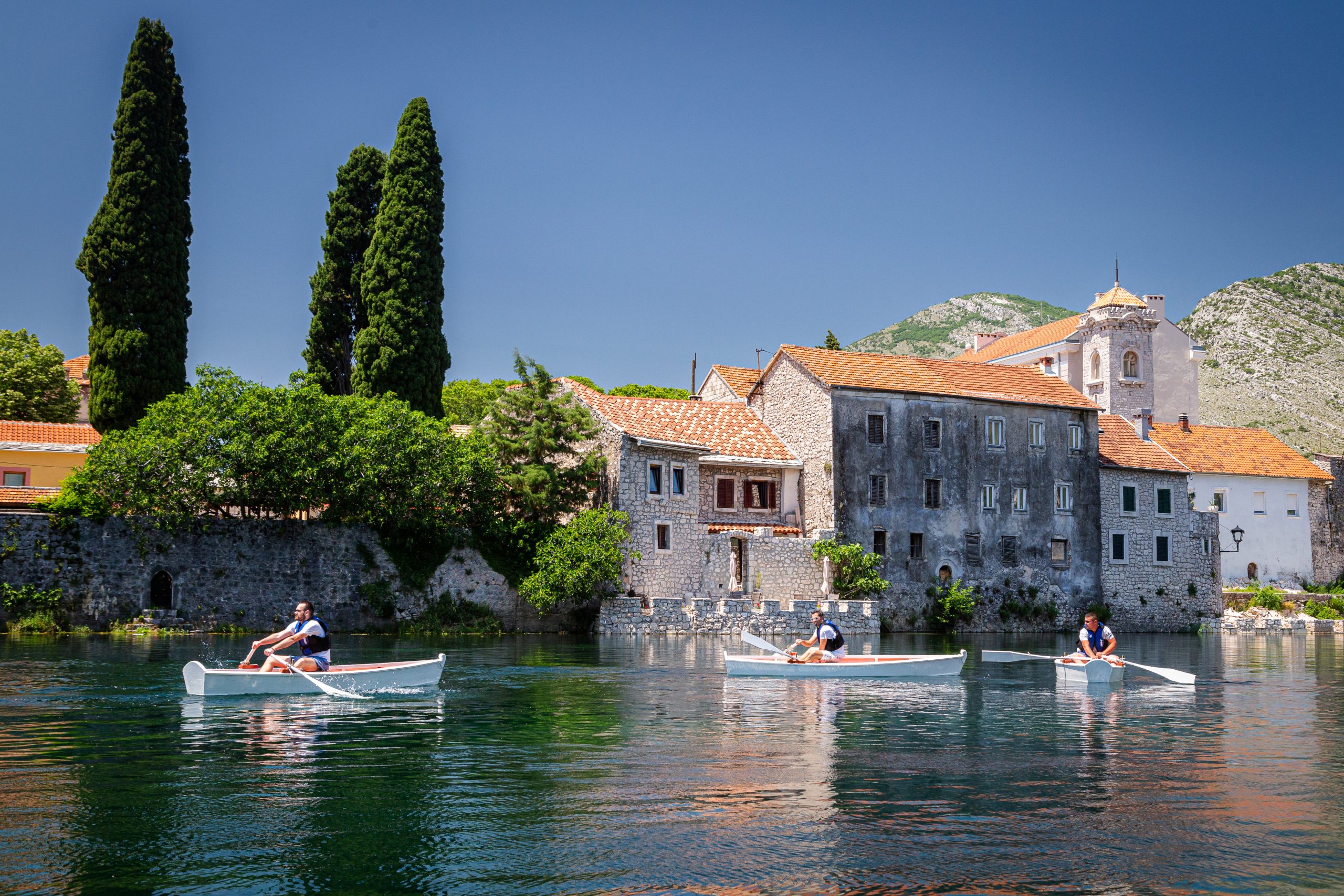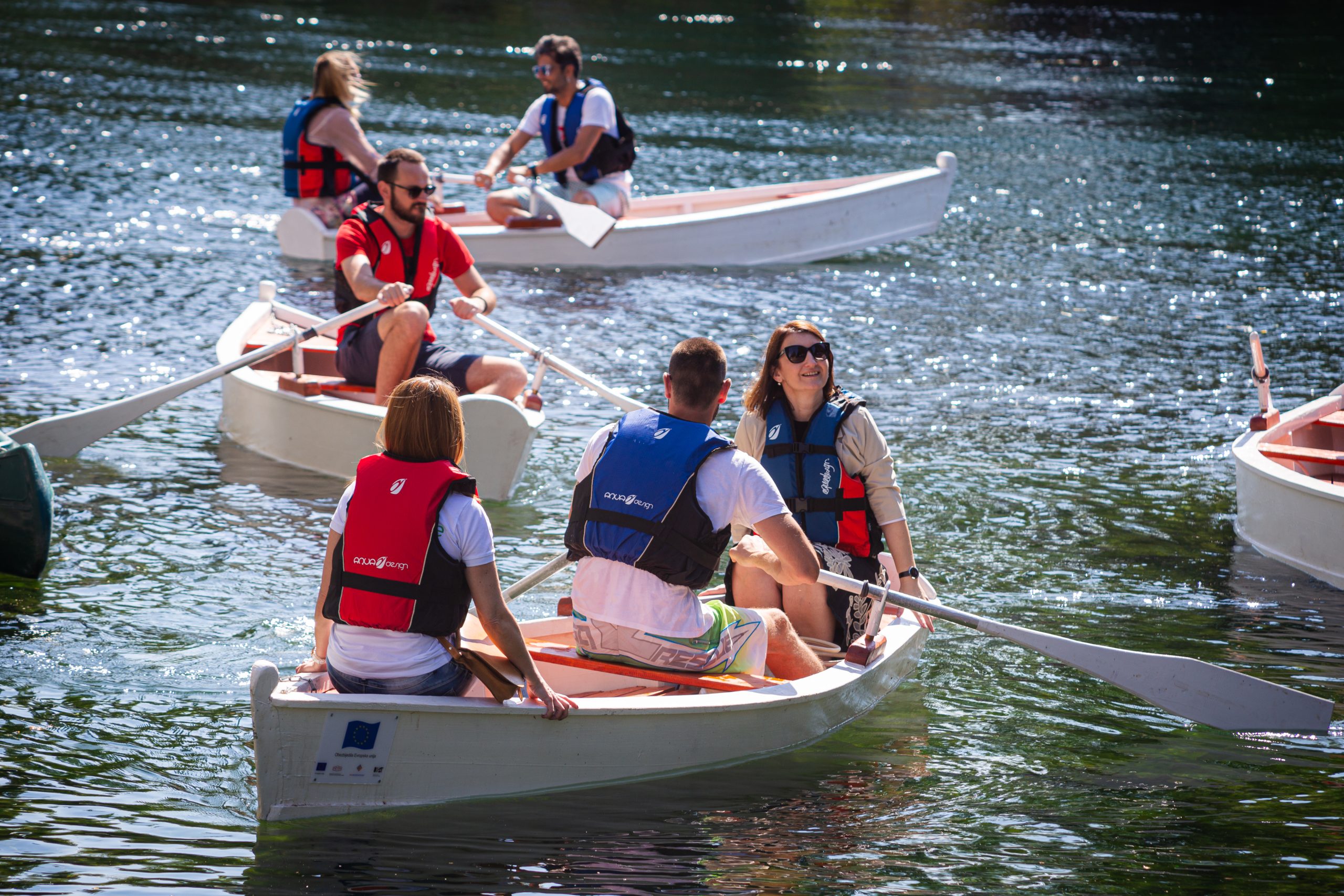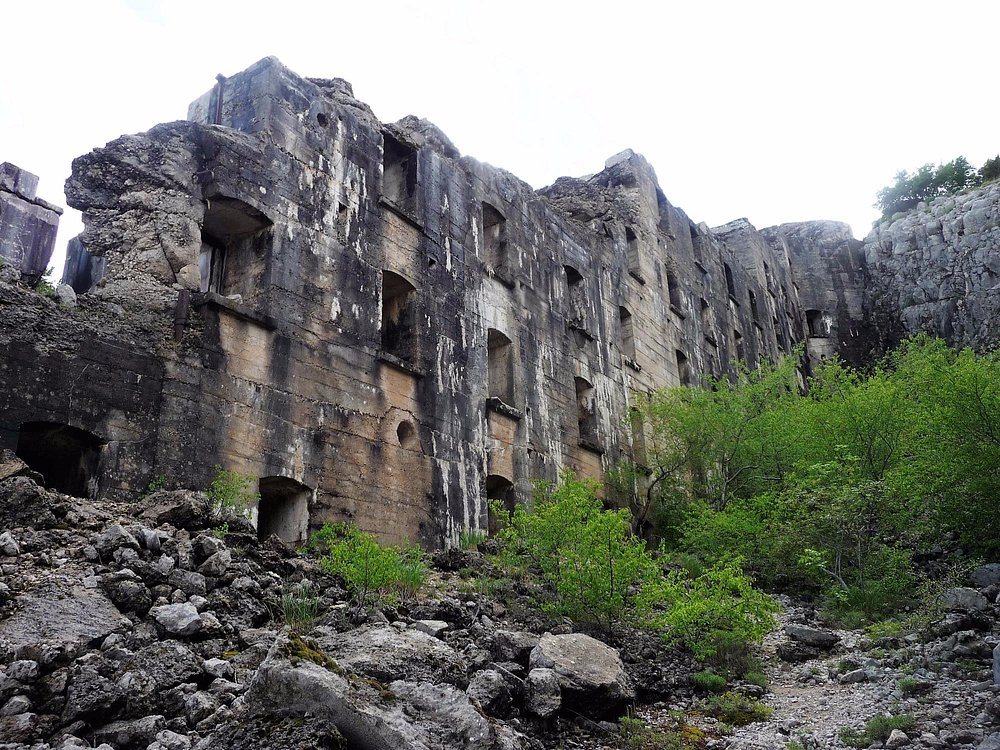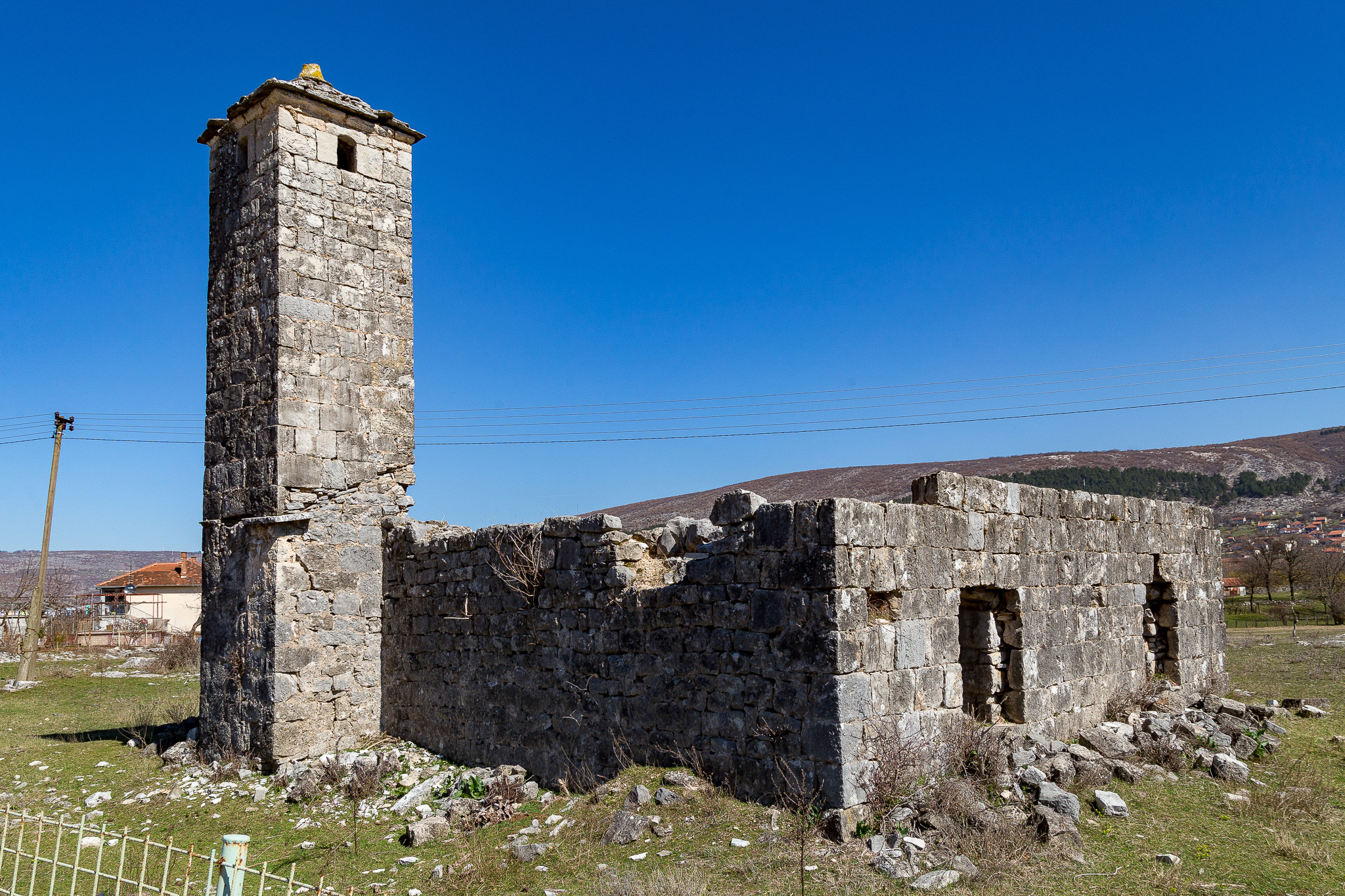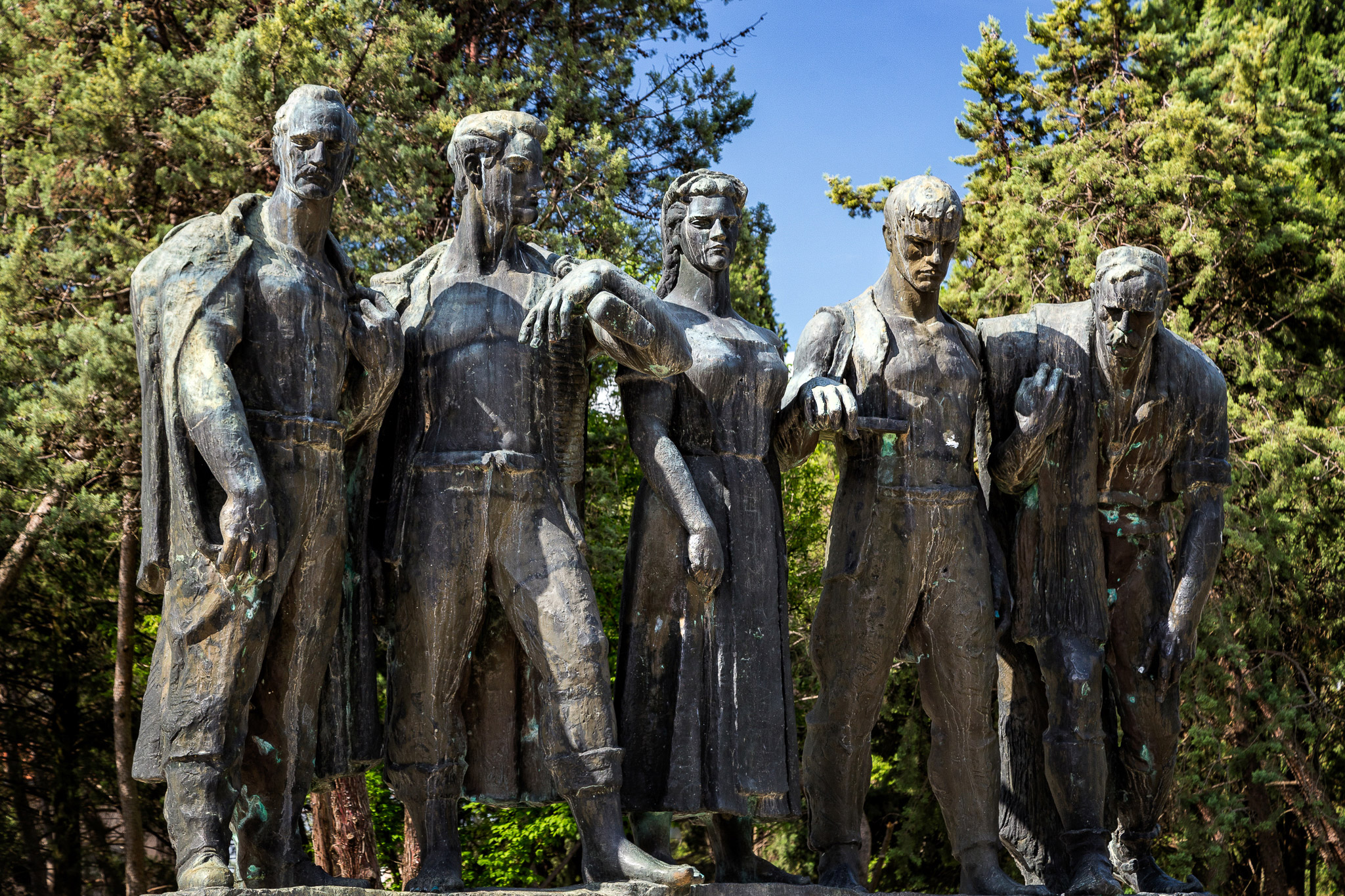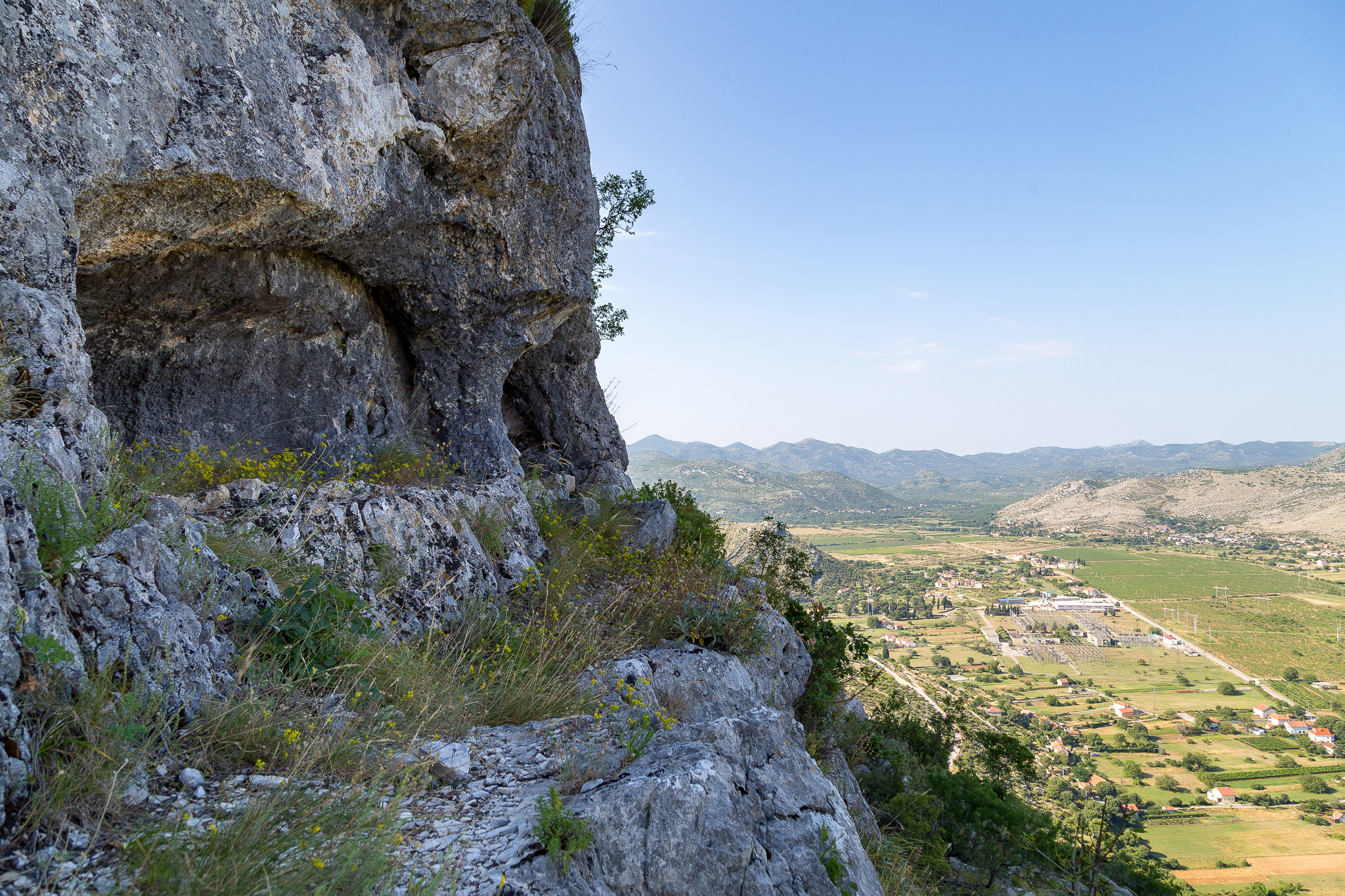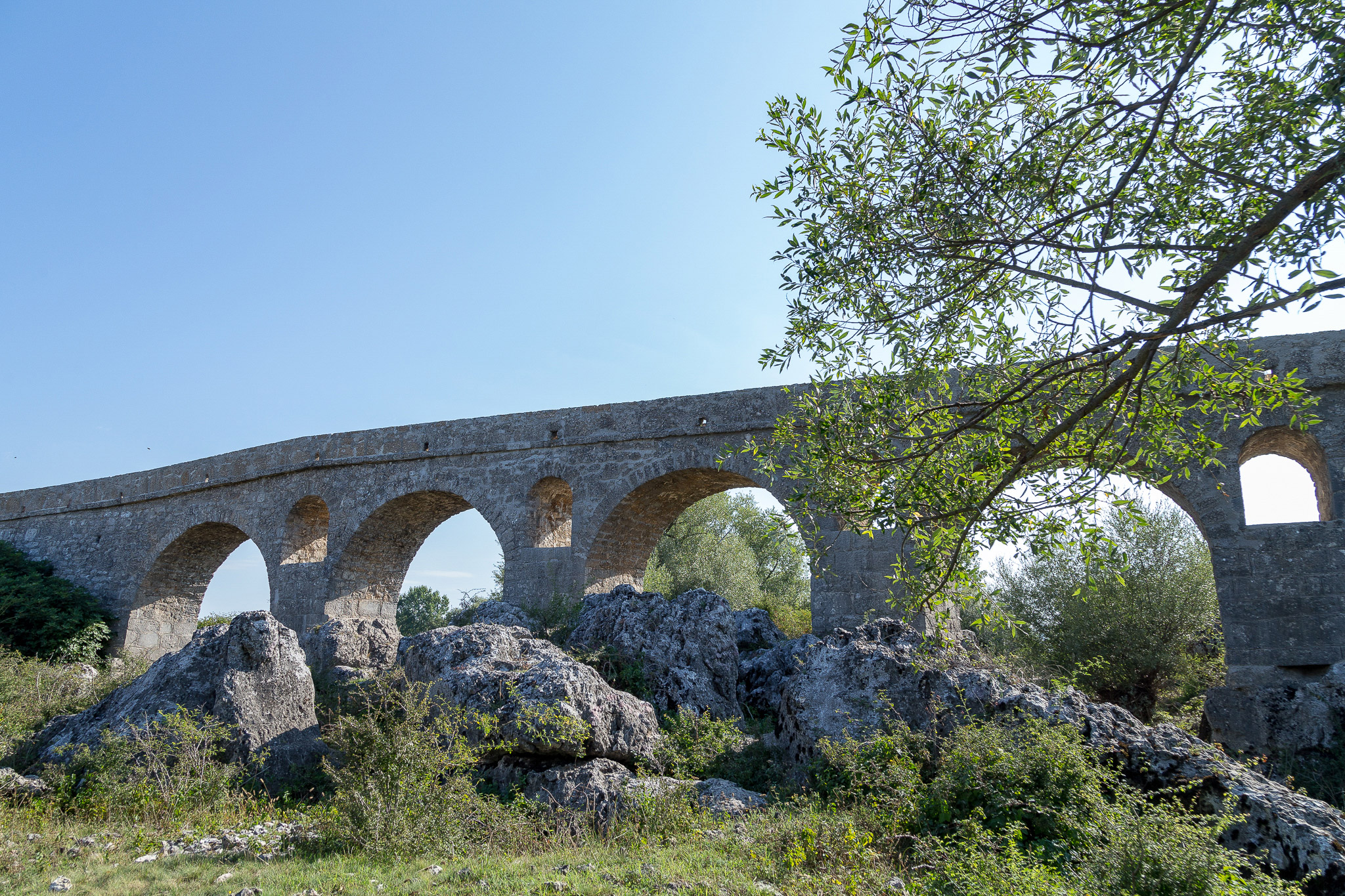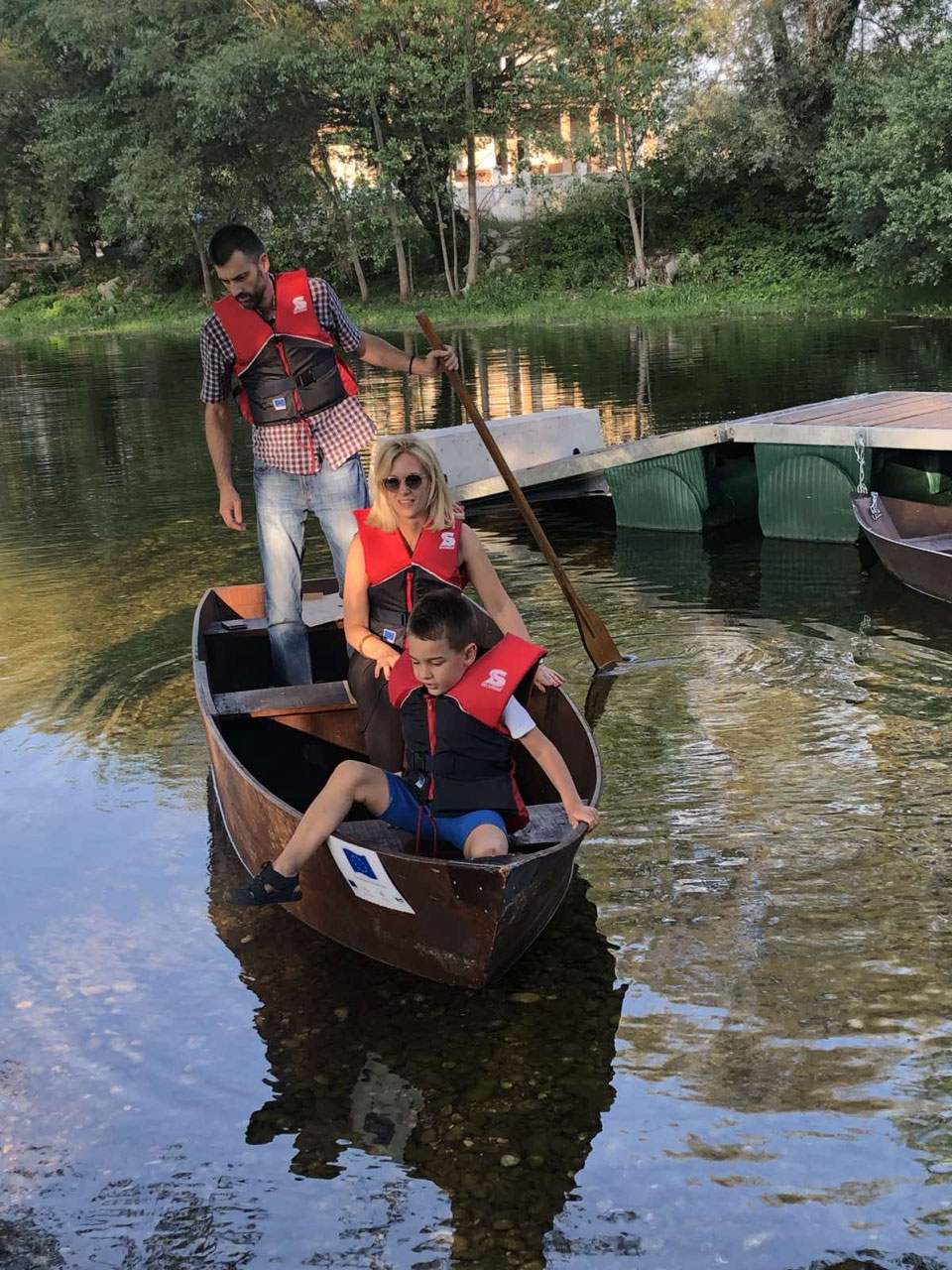Suspended between the Adriatic and the Dinaric Alps, the lands on the border between Bosnia and Herzegovina and Montenegro hide an amazing historical, cultural, and landscape heritage, which is still hardly known and just waiting to be discovered

The sky of Herzegovina, in this advanced spring that already smells of summer, is of an endless blue, mottled here and there with plump clouds that promise rain. ‘It is a capricious spring as few can be remembered’, told me the elderly with whom I stop to talk in the villages straddling the border with Montenegro, with frequent, sudden, and abundant rainfall which makes the clear river Trebišnjica bubble at the bottom of its valley, sunken and deep.
The road that from Trebinje climbs inland, towards Foča and central Bosnia, is immersed in silence, marked for long stretches by the festive yellow of flowering brooms. Moving after the hills in the direction of Bileća, the landscape is filled with lush green meadows, dotted here and there by the red of some isolated roofs. A few more kilometres, then, suddenly, a sign with no frills indicates the junction for the Monastery of Dobrićevo.
The story of Dobrićevo is rooted in a distant past, a place where truth and legend gently intertwine. One tale relates how, in ancient times, the great Emperor Constantine and his mother Helen, journeying near the river, paused seeking shelter from the heat. “This place is good (‘dobro’ in the local language),” Helen said to have declared, finding it ideal for retreat and pray. So many legends cradle Dobrićevo, often linked to the medieval Serbian Nemanjić dynasty or the more turbulent Ottoman era.

It is enough to cross the stone door, suddenly passing from bright to dim light, to immediately realise that Dobrićevo is a small hidden treasure, stemming from the intertwining of cultures, sensibilities, and traditions that have marked this part of the Balkans for centuries, suspended between the blue of the Adriatic and the barren, lunar peaks of the Dinaric Alps.
The architecture of the church itself holds so many secrets. Art historian Zdravko Kajmaković saw in the church a vivid illustration of a venerable blend of Raška style with Gothic elements, making it fascinating for anyone studying the region’s architecture. He even considered it “the most representative building in Herzegovina”.
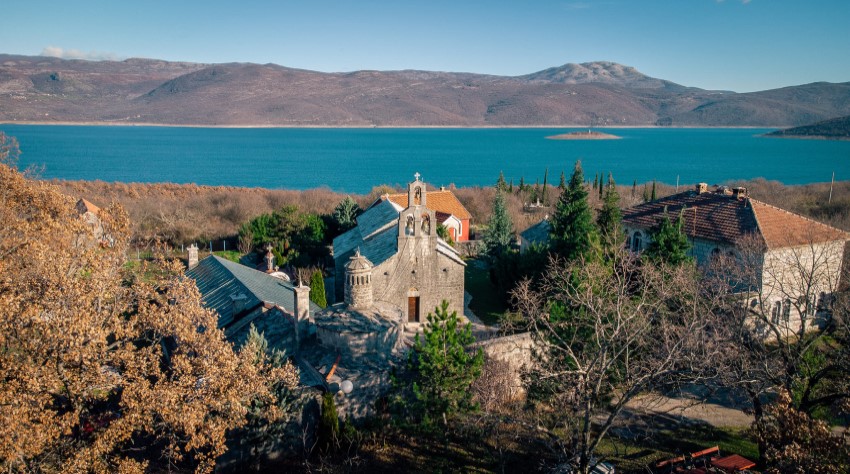
After the Monastery in Žitomislić, which is deemed to be the most exceptional ancient religious monument, Dobrićevo’s is regarded as the most monumental church preserved in central and eastern Herzegovina.
Influences of Serbian medieval architecture as well as Dalmatian craftsmanship (the Republic of Ragusa) are visible in the monastery complex. The degree of harmony achieved between those two architectural styles can be taken as a representative solution. The frescoes, painted by the monk and master fresco painter Georgije Mitrofanović, are beautifully preserved in extraordinary numbers. They are considered some of the most remarkable Serbian fresco paintings from the XVII century. Georgije Mitrofanović was a leading Serbian Orthodox painter of that time, famous for his work in monasteries such as Hilandar (Mount Athos, Greece), the Patriarchate of Peć/Pejë (Kosovo) and the Krupa Monastery in the Dalmatian Hinterland (Zadar Country, Croatia). It’s also believed he painted the holy doors in the Dobrićevo church.
The mountains and karst valleys of Herzegovina and Montenegro seem to hold secrets and legends hidden under every stone, behind every hedge. A stop in Bileća confirmed this. An isolated town, perched at a short distance from the large artificial lake named after it, at first sight, Bileća seems a town like many others: one of the many smaller and sleepy centres that dot the province of the Western Balkans.
But the old town still bears the strong imprint left by the Austro-Hungarian empire, which transformed it into a militarised outpost on its restless southern edge in the late XIX and early XX centuries, building mighty fortifications on the surrounding hills. The defensive line here was so formidable that it earned the nickname “Balkan Maginot Line”.
These forts, now mostly in ruins, no longer stand as sentinels but continue to jealously preserve a thousand and one stories. The most imposing, Strač fortress near Trebinje, with its reported 365 rooms and bristling with cannons, was said to be practically impossible to capture. Its powerful guns could even bombard the Italian fleet in the Adriatic during World War I.
Yet, some of the most compelling narratives are found in the smaller settlements around Bileća. Like in Grabovica, where the mosque of Hasan Pasha Predojević rises, built in 1572. Though time has damaged it, with its roof collapsed, the building still fascinates with its simple, beautiful proportions. A striking feature is its unique minaret with a square base, perhaps built by the renowned master stonemasons of Dubrovnik. This unusual shape beautifully reflects the unique mix of styles and traditions, both Islamic and Christian, that enriches this part of Europe.
While clouds drift lazily across the horizon, the mosque seems to rest silently. But legend tells a more dramatic tale: its construction was born from a tormented history of betrayal, revenge, and redemption. Hasan, it is said, was born Christian, named Nenad, the nephew of the powerful duke Predojević. The duke had six children, but when the Turks came seeking young boys for the empire (“blood tax”), he cruelly sent his nephew, who was an only, fatherless child. In Istanbul, Nenad became Hasan. Years later, he returned to Bileća as a pasha with an army. He embraced his mother, who tearfully revealed his uncle’s betrayal. Hasan’s anger fell mercilessly upon his uncle, and the duke suffered an atrocious death, stoned in the public square. To soothe his conscience, perhaps, the pasha ordered the mosque built in Grabovica, but also a church in Prijevor in honour of his mother. Though the church is lost, its heavy stone portal remains, uniquely marked with the cross alongside the symbols of the sun and the Ottoman crescent, a truly unique testimony to the rich and complex history of this territory.
Other legends reach into an even more distant and shadowy past. Like those of the stećci, enigmatic medieval funerary monuments from the XII to XV centuries, characteristic of Bosnia and Herzegovina, but also found in parts of Croatia, Serbia, and Montenegro. Bileća is home to the largest artificial necropolis of stećci, gathered here when the dam on the Trebišnjica flooded the valley, creating a lake both wide and deep. So many questions linger around these limestone monoliths, often graced with refined decorations, sometimes marked by mysterious sentences carved into the stone. But certainly, these voiceless stones speak of a shared cultural past on both sides of the border. Nikšić too proudly displays its collection of stećci, gathered behind the elegant, purple silhouette of King Nikola of Montenegro’s palace.
For much of its modern history, Nikšić grew as an industrial heartland, especially thanks to the immense ironworks built after WWII. Today, industry has faded and rethinking the city as a tourist centre is a challenge, but there’s no lack of spirit or desire. Wandering through the lively streets of what is now Montenegro’s second largest city, grown at the shadow of the Bedem fortress, life feels vibrant. The fortress walls, first built by the Romans in the IV century and rebuilt countless times, now play host to a popular alternative rock festival. Rock music is indeed a strong draw for Nikšić, with ‘Bedem Fest’ and ‘Lake Fest’ bringing thousands of enthusiasts together. The city also offers modern sports facilities. But the new tourism strategy gently places the recovery and enhancement of its historical and cultural heritage at its heart. For curious visitors, Nikšić holds many hidden pearls, like the imposing Tsar’s bridge (Carev most), also commissioned by King Nikola, gracefully spanning the tumultuous waters of the Zeta River with 20 stone arches. In each pylon, legend whispers, a gold coin was walled up – a silent pledge to fate for protection. Or the Hadži-Ismail mosque, with its elegant arabesque minaret, a lone, beautiful testament to the city’s Ottoman and multi-religious past.
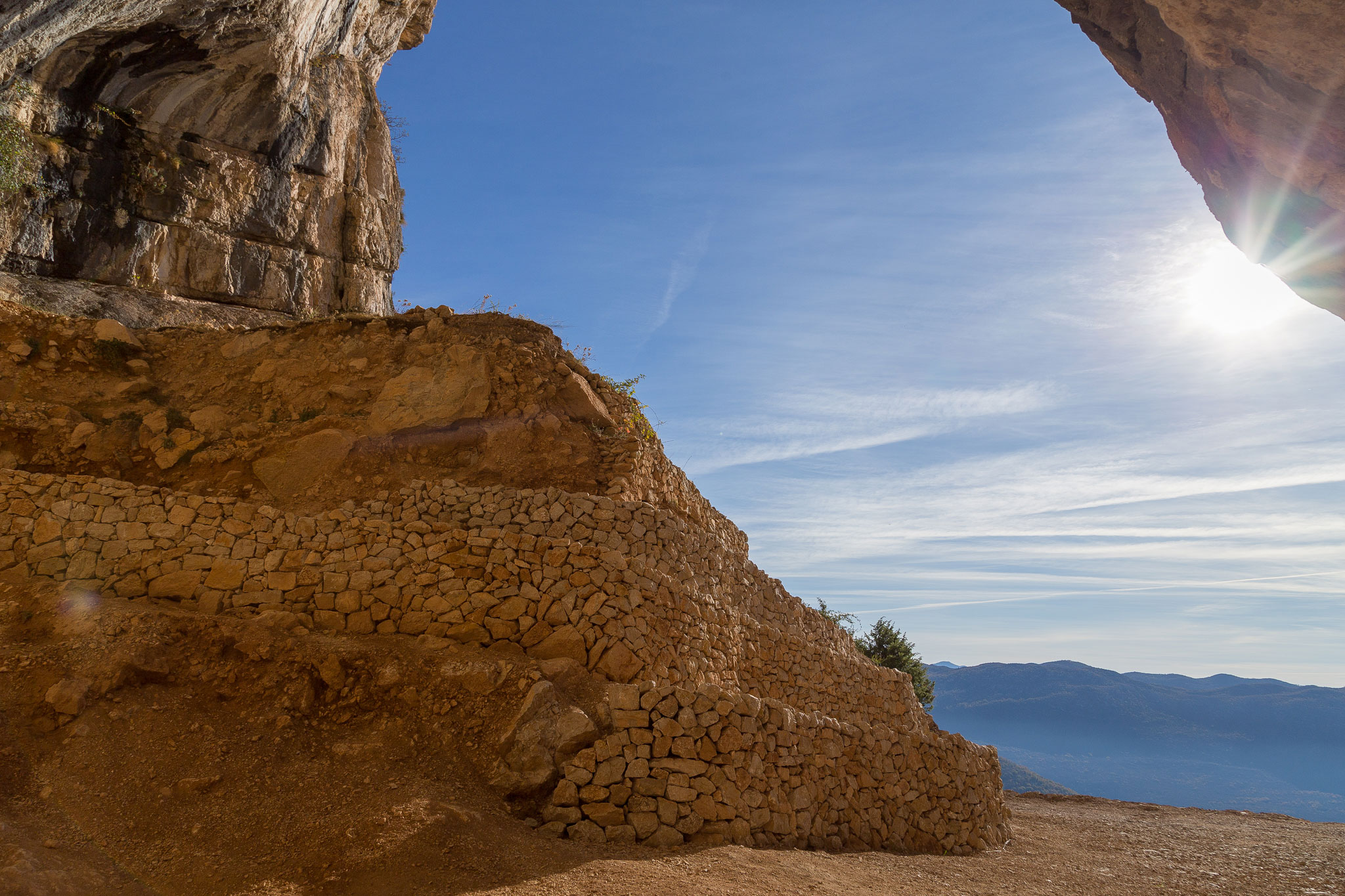
Perhaps the most precious treasure of all in Nikšić rests in the cool, shady halls of King Nikola’s palace, now the city museum. Alongside relics of the city’s history, it holds a rich display of prehistoric finds from the incredible archaeological site of the Crvena Stijena (Red Rock) Cave. Discovered in 1954 near the Trebišnjica river on the Montenegrin side, under an imposing wall of reddish rock, this cave is unique in Europe. It was continuously inhabited for 150,000 years, revealing finds from the Palaeolithic to the Bronze and Iron ages.
The road to Plužine climbs steeply from the Nikšić plain towards the north and the border with Bosnia and Herzegovina. This landscape is marked by dense stands of trees, limestone plateaus with some spectacular canyons formed by the Tara, Piva, Komarnica and Sušica rivers. Along the Piva River, a large artificial lake is formed by a 220 meters high dam, that has an amazing view of the lake on one side, and the river with its canyon on the other side.
The Piva Lake itself is deep at some places more than 200 meters, and 45 kilometres long. With its turquoise colour and crystal-clear waters, it is one of the most beautiful lakes in Montenegro. Even though it is a man-made, the lake fits perfectly in the mesmerizing surroundings. At the bottom of the lake there is the old town of Plužine; the Piva Monastery was also there, but it has been relocated. It is a testament to resilience. It was moved stone by stone from its original location and patiently rebuilt a few kilometres higher.

In this area, the true gem, so to speak, is the rafting, especially in the spectacular canyon carved by the Tara River, Europe’s deepest and longest. Rafting’s success here has simply been spectacular, booming in the 2000s to become a real brand for Plužine and Montenegro. For pure adrenaline adventures, spring is the time, when the river is swollen and roaring from melting snow. In summer, it offers a calmer, gentler experience, perfect for families.
Many visitors, including foreigners, have anyhow discovered the history and culture Plužine holds, alongside the incredible emotions of its nature, leading to significant growth in park visits. Absorbed in this beauty, minutes flow slowly. In the tranquillity of these mountains, the conscience of time is easily lost.
Returning to Herzegovina from the border, along the lower Trebišnjica river, the city of Trebinje is announced from afar by the imposing silhouette of the Arslanagić bridge. Its arches, so high and elegant, have graced the river since 1574. Ordered at the height of the Ottoman Empire by the grand vizier Mehmed-Pasha Sokolović, immortalised by Ivo Andrić’s Nobel Prize-winning novel about another bridge, the Arslanagić family held here the right to collect tolls for centuries, as it was a central point on the road from Dubrovnik to central Bosnia. Its stone structure, skilfully carved and untouched by hundreds of years, was nonetheless jeopardised by the dams in the 1960s. Completely submerged in 1965, the following year it was disassembled and reassembled five kilometres downstream, near the city’s edge, miraculously without losing its elegance or imposing charm.
Descending slowly to the banks, its clear waters shining with a deep emerald green, it becomes beautifully clear how Trebišnjica is the liquid heart of Trebinje. Even though it’s tens of kilometres from the Adriatic, it feels undoubtedly like a settlement on the seaside. The old city, “Kaštel,” once known as “Banj Vir“, was fortified in the early XVII century by Osman Pasha Resulbegović. He built high walls edged by four massive towers and dug a moat on the three sides not naturally protected by the river. Resulbegović didn’t stop at fortifying; he ordered the construction of public buildings, including the two mosques still adorning the old town. The Osman-Pasha Mosque is considered probably the most spacious and finely decorated in all eastern Herzegovina.
Trebinje has mirrored itself for centuries in the waters of the Trebišnjica. Before being controlled by dams in the 1960s due to frequent flooding, it was the longest underground river in Europe. Its waters overflowed with life and supported economic activities with numerous irrigation wheels. That’s why a core element of the city’s plans is to recover its relationship with the river. This involves potentially re-excavating the old canal (‘hendek’) around the old city, buried in the 1900s. And joyfully, the old tradition of rowing boats (‘lađe’) that once crowded the river’s waters may be revived.
Taking advantage of its proximity to Dubrovnik, Trebinje has much to offer to visitors. Outside the fortified quadrilateral of the old city, the town developed harmoniously, also thanks to the urbanistic imprint imposed by the Austro-Hungarian administrators who at the end of the XIX century, shortly after occupying Trebinje, ordered the laying of the immense plane trees that today are a true symbol of the city.
At the shadow of these majestic plants stand many of Trebinje’s most beautiful monuments: the Orthodox cathedral dedicated to the Transfiguration of Christ, the Catholic one dedicated to Our Lady, the monument to the fallen of the First World War based on the original drawings of poet and diplomat Jovan Dučić, and the elegant fountain dedicated to Austrian general Đuro Baron Babić, around which every day a market gathers full of unique colours and flavours, coming from the still unspoilt fields and pastures of Herzegovina.
Over the years, these lands have cuddled and preserved a rich, diverse heritage, out of different traditions and cultures. Despite the recent wars, divisions, and new frontiers, the deep bond between neighbouring countries has never been severed. Today, tourism can be a precious key to bridging borders, building new relationships, and sharing the best of this common heritage, not just with visitors, but truly and above all, among the wonderful people who live here.
Let the website www.heritage-bih-mne.com, created by the EU-funded project “Life on the BIH/MNE Border – Ancient Traces of Ageless Heritage and Tradition”, be your guide to these amazing locations and many others. Or simply take a road trip from Bileća, through Trebinje and Nikšić up to Plužine and explore this land of good people, scenic nature, priceless cultural heritage, and excellent food and wine yourself.
We don’t just think, we’re convinced that you’ll enjoy it!
Disclaimer: This article came as the result and combination of the article written by the journalist Francesco Martino and the description of some locations you may find at the website of the EU-funded project “Life on the BiH/MNE Border – Ancient Traces of Ageless Heritage and Tradition”.
*This designation is without prejudice to positions on status, and is in line with UNSCR 1244 and the ICJ Opinion on the Kosovo declaration of independence



